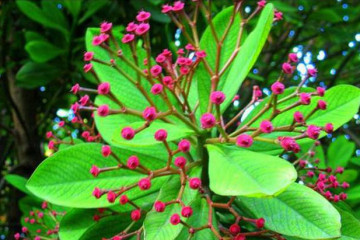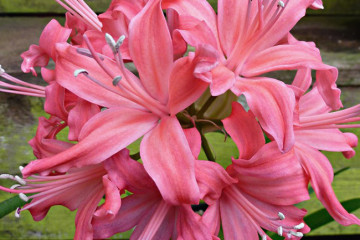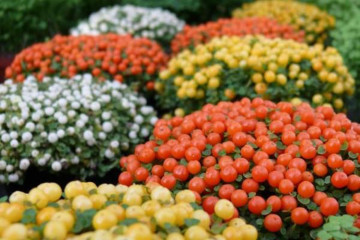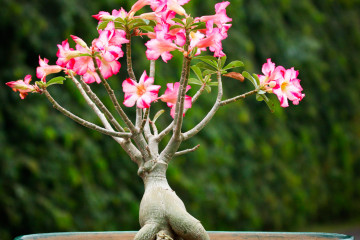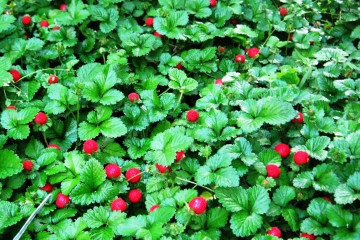Gooseberry care all season - basic rules for growing
Content:
Gooseberry is one of the first garden crops to wake up. Therefore, in the spring, as soon as possible, you need to carry out all the necessary work to care for the gooseberry, even before the buds swell and the first foliage appears. This article explains how to properly care for gooseberries during the spring, summer, and fall months.
When to take cover off a gooseberry
The time when it is necessary to remove the shelter from the sleeping bush directly depends on the climatic conditions.
In areas with a temperate and warm climate, in the first days of March, a layer of mulch is removed, which during the winter months saved the roots from hypothermia. The mulch is carefully removed, taken out of the territory of the site and burned. This procedure is mandatory, since over the winter, harmful larvae or fungal spores have probably settled in the humus.
In regions with cold winters, in the second half of March, immediately after the snow melts, agrofibre is removed from the gooseberry, twine is cut, branches are cut, mulch is removed.
How to care for gooseberries in the spring
Spring gooseberry care begins with the removal of excess shoots. Pruning of dead, frostbitten, weak and thin branches damaged by diseases or close to the ground is carried out in the first half of March. Surplus shoots are also removed.
All these actions allow you to direct the forces of the plant to the formation of large berries. Overgrown bushes with a large number of shoots are more susceptible to diseases and the appearance of pests, all their strength goes to fighting them and maintaining the life of new shoots. As a result, the plant is not pollinated properly, the berries become smaller and lose their taste.
The next stage of spring care for gooseberries is loosening the soil, which will provide warm air and moisture to the roots. Loosening is carried out carefully with a hoe to a depth of no more than 6 cm, so as not to damage the gooseberry root system. Next, weeds are removed.
In the spring, as soon as the ground is dry and dry weather is established, it is recommended to intensively shed the gooseberries until the soil is muddy at the roots. Further, the gooseberry is watered no more than once a week with slightly warm water in the morning or evening. Good watering is necessary during the flowering of the bush. But do not fill the bush - excess moisture provokes the formation of pathogenic vital activity in the roots.
A new mulch layer under the base of the plant will prevent moisture evaporation and slow down the emergence and growth of weeds. The best mulch for gooseberry can be:
- sawdust,
- Pine cones,
- straw,
- humus,
- compost or peat.
Fig. 3. swollen kidneys
It is recommended to feed the plant that has woken up after hibernation. In the first days of spring, during the period of bud swelling, gooseberries are fed with nitrogenous fertilizers. Mulching with compost in combination with nitrogen allows the plant to grow green mass.
The dosage is calculated according to the instructions on the package, exceeding the amount of nitrogen leads to excessive growth of greenery and the absence of ovaries.
During the period of the appearance of the first flowers, fertilize with phosphorus and potassium-containing compounds, which can also be applied in the autumn period after harvest. Phosphorus nourishes the roots, influences the formation, size and flavor of the berries. A decrease in yield and a lack of sweetness in berries is the first sign of a lack of this trace element.
After feeding the gooseberries, watering is necessary. Together with water, the fertilizer is absorbed faster by the root system.
How to care for gooseberries in summer
In the summer months, gooseberries are watered depending on the weather conditions, it is necessary to monitor the moisture content of the soil. If it rains in a day or two, natural watering will be enough for the bush. In dry weather, it is recommended to pour a large bucket of water under the gooseberry root.
During the period of intensive ripening of berries in the summer months, gooseberries need to be nourished with the necessary trace elements. To do this, the land under the bush is watered with water with a concentrate of manure and compost.
- A one-liter barrel requires one bucket of fresh manure and a quarter of a bucket of compost - all of which is filled with water.
- The slurry mixture should be infused for about two weeks.
- Then one part of the concentrate is added to 10 parts of water.
The resulting liquid is poured into a small depression dug around the crown of the bush, then the furrow is buried and mulched with peat. Such dressing is used no more than twice a summer during the ripening of berries; after harvesting, such fertilizer is not applied.
Fertilizers with potassium, phosphorus and a small concentration of nitrogen water the roots or spray the crown of the bush. The root feed is the main one, and the outer one performs more of an additional function.
How to tie a gooseberry
After the formation of the crown, by cutting off unnecessary branches, a support is established for the garter of the bush. A tied plant is less susceptible to diseases, insect colonization, and bears fruit longer.
In addition, the garter allows you to keep the shape of the bush, which gives an aesthetically pleasing look.
The plant is tied up from the first year of planting, usually in early spring before the buds swell or in the fall after the final harvest. It is not recommended to disturb the plant in the summer, since the gooseberry will spend all its energy on restoring damage that may occur when tying it up.
How to grow gooseberries on a trellis, trunk or support around the perimeter of the bush
The perimeter support is assembled from wooden slats, polypropylene pipes or reinforcement welded in a circle. All gooseberry support materials are necessarily treated with an antiseptic composition and painted to protect the plant from harmful microflora.
The stem is a vertical support to which the strongest gooseberry shoot growing up is tied. Lateral shoots are not attached to such a support, but are cut off.
In the future, you need to leave only the young, strongest and upright growing shoots that will form the crown of the bush. Undeveloped shoots growing along the bottom must be cut off.
For the trellis, along the rows of gooseberry bushes, two supports are installed, on which the wire is horizontally stretched with an interval of no more than 0.3 m.
For a simple trellis on the gooseberry, three vertical shoots are left, which are bred in different directions. New shoots will later be tied to the wire as they grow.
For a double trellis, a U-shaped support is installed at the edges. Shoots from one bush are tied to rows of wire on both sides, which increases the number of fruiting branches. This method is used in summer cottages with a large number of bushes that will grow freely without shading each other. In this case, the fruits are evenly illuminated and warmed up by the rays of the sun.
Harvesting
The timing of harvesting depends on the variety and climatic conditions of the region, most often it is the end of July - August.
In the northern regions, it is recommended to breed early varieties that allow the berries to ripen in a fairly short time, such as Eaglet, Rosy or Rodnik. The ripeness of berries can be divided into technical and actual.
- Technically ripe berries are large enough, with a pronounced sour taste and crispy skins, are used for the preparation of winter preparations.
- In order for the berries to reach actual ripeness, they need to be allowed to ripen. Such gooseberry fruits are quite soft inside and out, do not crunch when bitten, and have a sweet and sour taste.
The fruits gain ripeness unevenly, at first large berries are collected, and small ones remain to sing on the bush. This feature of the gooseberry allows gardeners to harvest several times during the month.
Preparing gooseberries for winter
After the last harvest, it is necessary to cut off the broken and darkened shoots from the gooseberry. The base of the bush should be one branch without branching, in the next season such a plant will give a larger yield.
In September, a couple of weeks after pruning, the gooseberries should be fed with phosphorus and potassium - this will allow the branches to become woody, which means that the bush will more easily endure frosts. Then the gooseberry is spilled with fungicide formulations that will destroy the pests.
The ground under the bush is weeded, cleared of dry leaves and loosened. After loosening, insect larvae find themselves on the surface of the earth and die in the first frost.
Timely procedures for the care and cultivation of gooseberries allow you to collect a rich and tasty harvest for more than one year. Many novice gardeners ignore the above rules and then wonder why gooseberries have sour or small berries. In fact, each bush can delight with a bountiful harvest, subject to the rules of agricultural technology.








